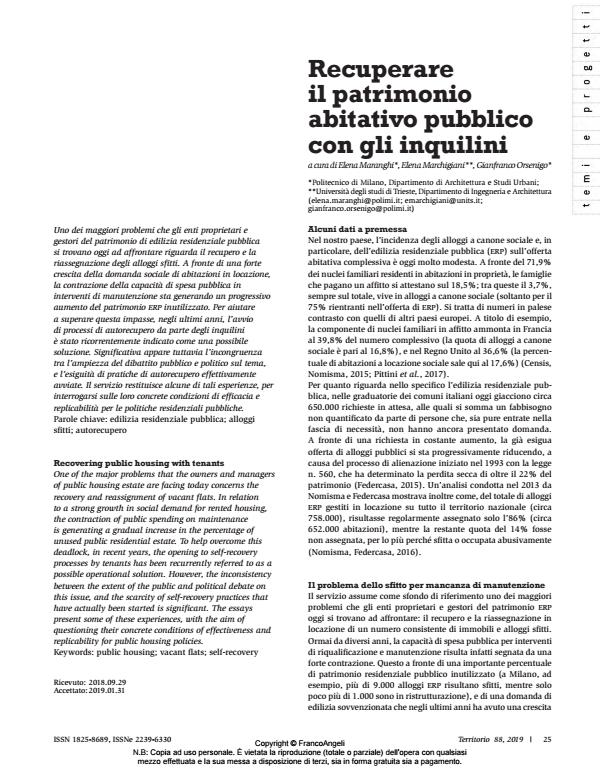Recovering public housing with tenants
Journal title TERRITORIO
Author/s Elena Maranghi, Elena Marchigiani, Gianfranco Orsenigo
Publishing Year 2019 Issue 2019/88
Language Italian Pages 4 P. 25-28 File size 790 KB
DOI 10.3280/TR2019-088002
DOI is like a bar code for intellectual property: to have more infomation
click here
Below, you can see the article first page
If you want to buy this article in PDF format, you can do it, following the instructions to buy download credits

FrancoAngeli is member of Publishers International Linking Association, Inc (PILA), a not-for-profit association which run the CrossRef service enabling links to and from online scholarly content.
One of the major problems that the owners and managers of public housing estate are facing today concerns the recovery and reassignment of vacant flats. In relation to a strong growth in social demand for rented housing, the contraction of public spending on maintenance is generating a gradual increase in the percentage of unused public residential estate. To help overcome this deadlock, in recent years, the opening to self-recovery processes by tenants has been recurrently referred to as a possible operational solution. However, the inconsistency between the extent of the public and political debate on this issue, and the scarcity of self-recovery practices that have actually been started is significant. The essays present some of these experiences, with the aim of questioning their concrete conditions of effectiveness and replicability for public housing policies.
Keywords: Public housing; vacant flats; self-recove
- Cohousing in Italy Manuela Maggio, pp.49 (ISBN:978-3-031-83276-5)
Elena Maranghi, Elena Marchigiani, Gianfranco Orsenigo, Recuperare il patrimonio abitativo pubblico con gli inquilini in "TERRITORIO" 88/2019, pp 25-28, DOI: 10.3280/TR2019-088002